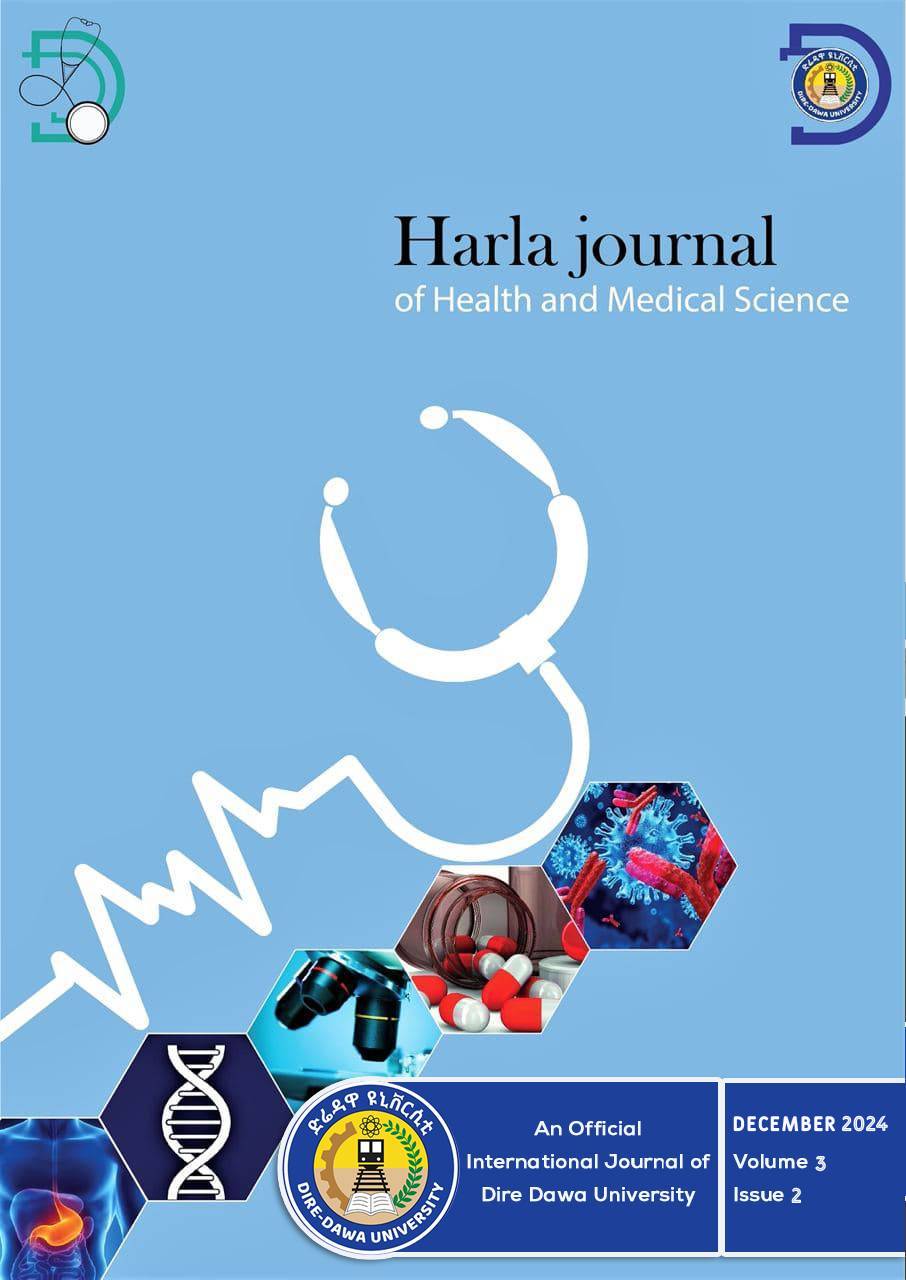Early Delivery Decision, Delivery Complication and Its Associated Factors Among Mothers Who Underwent Emergency Cesarean Section in Dire Dawa Health Facilities:
Prospective Follow Up Study
DOI:
https://doi.org/10.20372/hjhms.v3i2.183Keywords:
Caesarean Section, Decision to Delivery, Delivery Complication, Early DeliveryAbstract
Background: The unpredictable nature of childbirth is why emergency obstetric care has been called the keystone in the arch of safe motherhood. Knight defines the third delay as failure to receive adequate and appropriate care once a mother reaches a health facility. The objective of this study was to assess the current average decision-to-delivery interval for emergency cesarean sections (EmCS) and to propose an optimum, realistic, and feasible time frame within which caesarean sections should be performed following the decision.
Methods: An institution-based cross-sectional study was carried out from March to June 2024 in Dire Dawa city hospitals, Eastern Ethiopia. A systematic random sampling technique was used to select 414 study participants. The collected data was entered into the Kobo tool and then exported into SPSS version 25.0 for data analysis. Then, binary logistic regression analysis was carried out to identify the association between dependent and independent variables at a confidence interval of 95% and a significance level of P-value < 0.05.
Results: A total of 405 women who underwent emergency cesarean section were recruited. The median decision delivery interval was 65 (35, 115) minutes. Only 57 (14.1%) with (95% CI: 10.67, 17.48) of EmCS were operated within 30 min from decision time. Need to stabilize (AOR = 3.017, 95% CI: 1.004, 9.06); week of working day (AOR = 2.69, 95% CI: 1.006, 7.22); anesthesia time (AOR = 2.914, 95% CI: 1.24, 6.81); and presence of materials (AOR = 4.05, 95% CI: 1.64, 9.96) were positively associated with the decision to delivery interval.
Conclusion: Decision-to-delivery interval within the recommended time is not achieved. Being a marital status, antenatal care follow-up, place of residency, patient need for stabilization, material in the labor ward, and week of the day emergency cesarean section was performed are associated factors of the decision-to-delivery interval. So that all health professionals need to engage in improving the decision-to-delivery interval by designing different strategies for patients who need stabilization before operation, the health providers facilitate the antenatal care follow-up.
Downloads
Published
How to Cite
Issue
Section
License
Copyright (c) 2024 Harla Journals and Author(s)

This work is licensed under a Creative Commons Attribution-NonCommercial 4.0 International License.






